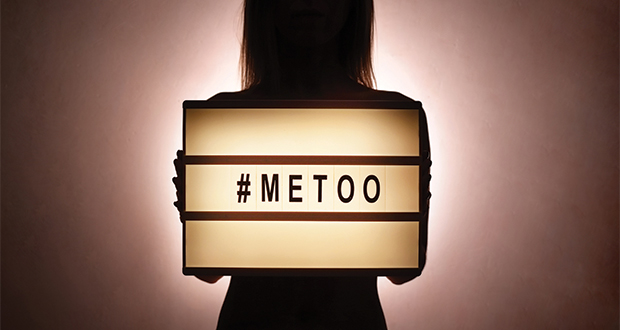 It is now well-established that the #MeToo social responsibility movement is changing corporate America. It has led to the downfall of powerful executives and has put corporate culture under a microscope. The media, regulators and investors are focusing not only on alleged misconduct, but also on the corporate response to allegations of misconduct, including, in some cases, the response to allegations made many years ago.
It is now well-established that the #MeToo social responsibility movement is changing corporate America. It has led to the downfall of powerful executives and has put corporate culture under a microscope. The media, regulators and investors are focusing not only on alleged misconduct, but also on the corporate response to allegations of misconduct, including, in some cases, the response to allegations made many years ago.
An inadequate response can lead to bad publicity, reputational harm and corporate liability. The complainants are not the only ones seeking to hold corporations liable for unaddressed misconduct. Other stakeholders include shareholders who are filing suits against corporations based on a drop in stock price following disclosure of allegedly unaddressed misconduct. Though the viability of such lawsuits remains to be seen, the filing of such suits is likely to continue, at least for now.
Now more than ever, corporate executives, and boards, are appropriately focused on establishing a supportive and inclusive culture, one that prevents harassment and that seeks to identify and eradicate harassment when it does happen. Up-to-date compliance policies, appropriate training that includes all levels of an organization, a confidential reporting system, and individual and corporate accountability are all a part of establishing such a culture. Putting such processes in place will have the effect of preventing misconduct, setting the right tone, and allowing for a prompt reporting of misconduct when it occurs.
Once an allegation of misconduct has been made, however, the response is critical. The investigation into alleged misconduct has taken on such import for a number of reasons.
First, as the #MeToo movement has made very clear, actually investigating and addressing misconduct allegations is the right thing to do. Complainants deserve it, and so do the accused. The media is not the right place to debate what did or did not happen. Too much is on the line for the individuals involved.
In addition, a thorough investigation will help protect the company from potential liability. The crux of so many of the lawsuits that have been filed — whether by the complainants, the accused, or the shareholders — is that management did not adequately investigate complaints of harassment before taking action, or not taking action.
A company can have the most robust policies and training programs in place and yet a failure to adequately investigate and address complaints makes those efforts meaningless. Ultimately, it is the strength of the investigation that will set the right tone and protect the company from liability. And it will be scrutinized by the media and potential litigants. So you need to do it right.
What are the key components of a good investigation in the era of #MeToo?
Independence
The investigation must be independent. Not only must the investigation be independent, meaning that it must be conducted by disinterested parties, but it must be viewed as independent by those involved and by the outside world.
An investigation conducted by individuals who are close to those involved has no chance of uncovering what really happened, which is of course the ultimate goal. Witnesses are unlikely to be candid, and none of the parties will feel that their interests were taken seriously.
In addition, an investigation that lacks the appearance of independence will not protect the company from claims challenging the sufficiency of the response. If the response to a complaint of misconduct is a sham investigation, that in and of itself can form the basis of corporate liability.
The need for independence does not necessarily mean that the investigation must be handled by investigators outside the company. In larger companies especially, it may be possible for in-house lawyers or trained investigators within the human resources department to conduct the investigation. It is critical, however, that those conducting the investigation be entirely removed from the employees involved. If the investigators know the employees at all, even in passing, the air of independence is lost.
If the complainant or the accused are senior managers, it will almost always be necessary to bring in outside resources to conduct the investigation. It is simply not possible for subordinates to conduct an independent investigation involving senior managers. Even if the reporting structure is such that the investigators are in a separate chain of command, the profile of those involved within the company will influence how the investigation is conducted and the conclusions reached.
Equally important, as recent media reports have made clear, when a high-level or prominent individual within the company is involved, the investigation will not be viewed by other employees or the public as independent if it is conducted by internal investigators.
Comprehensiveness
The investigation must be thorough. These are complicated investigations. Often, investigators may be dealing with “he said, she said,” with very few, if any, witnesses to the alleged conduct.
If there are witnesses, then investigators must speak to everyone they can, and expand the scope when new issues arise. Documents can and should be reviewed. Emails, text messages and social media all are rich sources of information not only about a specific incident, but about how the employees have interacted over time.
Even in the “he said, she said” situation, those documents may still exist. As experienced investigators know, even absent witnesses, reviewing this and other information can help corroborate what is provided directly by both the complainant and the accused and allow investigators to make those critical credibility determinations.

The crux of so many of the lawsuits that have been filed is that management did not adequately investigate complaints of harassment before taking action, or not taking action.
Proper reporting
There must be a plan for how to report the results of the investigation. There are a number of important factors to consider. The conclusions must of course be reported to those within the company who have the authority to make the ultimate decision about whether to take any employment action. As a general matter, then, the investigation should be reported to the general counsel’s office.
If the investigation involves a higher-level executive, someone to whom the general counsel may report or an equal to the general counsel, then the report should be made to the board, or a special committee of the board. This comes back to issues of independence. An independent investigation is critical, and the decision-makers within the company must be independent as well. If the general counsel even appears interested or conflicted, the report should be made to members of the board.
In addition to reporting the results of the investigation to the right decision-maker, it also is important to report the results to the individuals involved. This can be complicated because there are privacy concerns and, if the investigation has been conducted by counsel, there may be issues with privilege as well. But it is important to communicate with the complainant.
If employment action is taken, the accused obviously will have some indication of what happened with the investigation, but if not then there must be some type of communication to him or her as well. While the substance obviously will vary greatly, the communication should make clear that the allegation was taken seriously and an investigation was conducted.
Highly regulated companies will have to consider whether and how the investigation should be disclosed to regulators and possibly the public. To the extent there has been media coverage regarding the allegation, the company must have a media plan in place and determine what, if anything, will be shared with the press.
Privilege and other considerations
When planning an investigation, other considerations include whether to conduct the investigation under privilege and literally who (what people) will conduct the investigation.
Given the volatility of these issues right now, it generally will make sense to conduct a privileged investigation by outside counsel for the simple reason that it gives the company control over whether and how the report and ultimate conclusions are disclosed. There is a common misperception that if an investigation is privileged it becomes so secret as to be useless in defense of the company absent a full waiver. That is not the case.
Details about who conducted it, how it was conducted (e.g., 20 people interviewed and 1,000 documents reviewed), to whom the results were reported and even underlying facts that were uncovered can, as a general matter, be revealed to third parties without waiving the privilege.
Moreover, while it may make sense to conduct a privileged investigation initially so that the company can control its disclosure, waiver may also be appropriate. Experienced investigators conduct investigations, especially in this arena, knowing that the company may elect to waive the privilege and they conduct the investigation accordingly.
Lastly, even after determining whether the investigation will be conducted internally or externally and whether it will be conducted under privilege or not, consideration should be given to the individuals chosen to conduct the interviews.
These investigations are focused on sensitive topics. To the extent there is diversity among those involved in the conduct, the investigative team should also be diverse. When a complainant or a witness or an accused is being asked to describe incredibly personal or potentially embarrassing interactions, the person asking the question matters. Think about that, and who might be best suited to ask those questions, at the outset of the investigation.
Conclusion
The investigation is not only a mechanism for uncovering what happened in order to make employment decisions, but is an important part of establishing a supportive and inclusive workplace. A properly designed and implemented investigation will give employees the process to which they are entitled, make employees feel that they have been treated fairly, and protect the company from liability.
Sarah Walters is a partner in McDermott, Will & Emery’s white collar and securities defense group and a former assistant U.S. attorney in Boston. She conducts internal investigations and assists companies in developing compliance policies and training programs.
 New England Biz Law Update
New England Biz Law Update
